
Tuning a djembe is easy. But tuning a djembe well can be difficult. A long time ago, I bought 400 djembes in Mali. I put the djembes in a container to transport them to Spain. A family of hungry insects travelled along with the djembes, and during the trip, they ate the goat skin heads of the djembes. I took several months to change them, and in the process, I learned a lot about tuning djembes. The sensation I feel when, after the hard work involved in tuning a djembe, and I listen to its wonderful sound, is simply orgasmaical.
I am going to describe how I tune djembes. I do not mean this is the only way to tune djembe, simply my own method. The djembe, as we know now it, is a modern instrument. Metal rings we use now did not exist before, nor polyester rope.
I have read that it comes from the XIII century, but I have found no evidence to support this claim.
 |
The oldest sculptural representation that I know similar to a djembe, is this figure that arrived to the Royal Museum of Central Africa of Belgique in 1903, coming from the Democratic Republic of the Congo, former Zaïre. |
 |
I have visited many African museums, and have travelled thousands of miles through Africa. The only ancient drums I have seen are like the one on the left, which I found in a village in northern Mali. |
If you feel you have a better method of djembe tuning or any tips, do it. Please, don't accept what can be intimidating instructions from supposed "guardians of the traditions", unless you like to be intimidated. To tune a djembe, you simply need your hands, some gloves, your head, and... maybe a few beers!
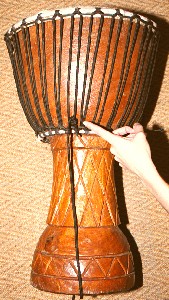 |
First, I look for the beginning of the vertical tuning rope. The knot can be made near the top ring, or near the low ring. I prefer doing it near the low ring. |  |
 |
When I have found it, I take the first vertical rope to its right, and pull it. It is better to do this with gloves. I see I obtain a bit of rope. | 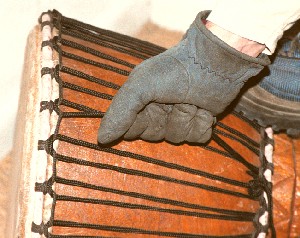 |
 |
I take the following vertical rope to the right, and repeat the operation. I verify that I obtain more rope than before. |  |
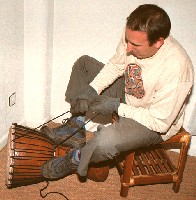 |
I do the same thing with all the ropes, from left to right. I try to pull all the ropes with the same tension, in order to get a final good sound. |
 |
When I have completed one full circuit around the djembe pulling the vertical ropes, I remove the slack and redo the knot in the same place where I had begun. If I see that the vertical ropes are still loose, I repeat the operation from the beginning. It is very important to pull the vertical ropes as tight as possible before going on to the next step. | 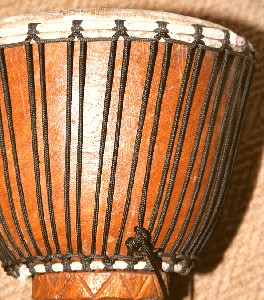 |
 |
I rest, stretch muscles and drink a beer. | 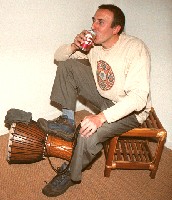 |
The next step is to interlace the vertical ropes, with the free rope that I have obtained from pulling the verticals. I begin with the two vertical ropes to the right of the beginning of the rope, i.i.e.. where the knot is.
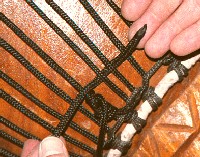 |
I pass the end of the rope behind both ropes that I am going to interlace. | 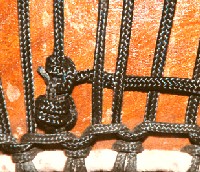 |
 |
Then I pass the end of the rope behind the first one of both
ropes that I want to interlace.
|
 |
I pull the end of the rope, and observe that both vertical ropes interlace. | 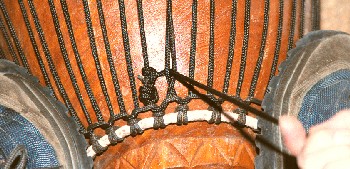 |
|
I repeat the operation with both vertical following ropes: |
||||||
|
| I repeat the operation with all sets of verticals: |
|
|
|
|
|
|
When I have gone around the djembe interlacing all the vertical ropes, I rest, stretch muscles and drink another beer.
Now I need to begin the next row of interlacing vertical ropes. As they are no longer parallel, it is more difficult. I try to focus, and search for both vertical ropes that I have to interlace. I look at them fixedly, and ignoring the others [Note: perhaps the beer isn't helping after all...<grin>-R].
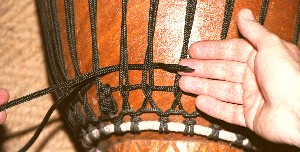 |
Basically, the method is the same as before, I pass the end of the rope behind both ropes that I am going to interlace. |  |
 |
Then I pass the end of the rope behind the first one of both
ropes that I want to interlace, and pull.
The right picture is a close-up detail taken from the left picture. |
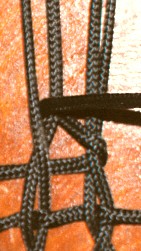 |
 |
I repeat the operation with both vertical following ropes. |
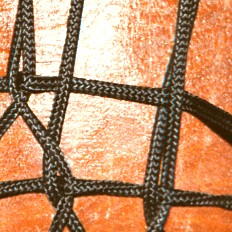 |
I pass the end of the rope behind both ropes that I am going to interlace. |
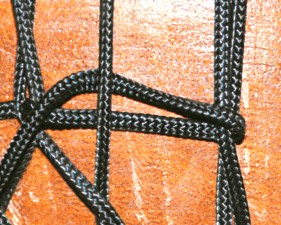 |
Then I pass the end of the rope behind the first one of both ropes that I want to interlace. |
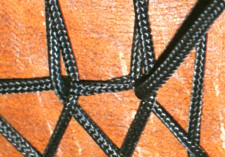 |
I pull the end of the rope, and observe that both vertical ropes interlace. |
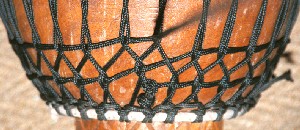 |
I continue interlacing, until I come again to the knot zone. |
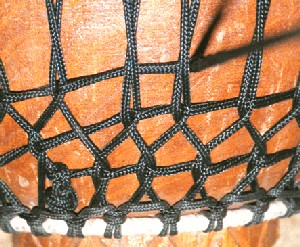 |
If previously I have pulled the vertical ropes tightly, the djembe should sound great, at this point. But if not, I continue interlacing the vertical ropes. I pass the end of the rope behind both ropes that I am going to interlace. |
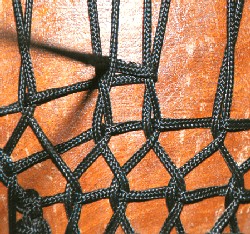 |
Then I pass the end of the rope behind the first one of both
ropes that I want to interlace. I pull the end of the rope, and observe
that both vertical ropes interlace.
|
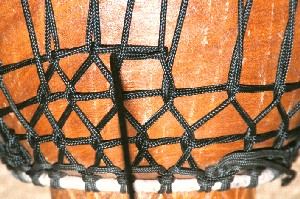 |
I continue interlacing the vertical ropes, until I obtain the sound that I want. |
I rest, stretch muscles, drink another beer, and play!
 |
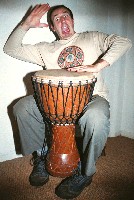 |
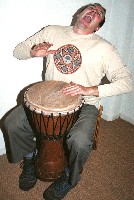 |
 |
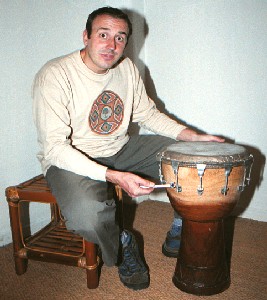 |
Along with traditional djembes, I also make and sell modern djembes,
with mechanical tuning. These are much easier to tune, using a key or
wrench.
|
Note: Thanks to Reverend R. Clark for his corrections in grammar and usage.
© José Francisco Ortega Viota
africaclub@ymail.com
africaclub2@hotmail.com